Arturo Pérez-Reverte
Books: Mystery | Historical
The Fencing Master (1988), The Flanders Panel (1990), The Club Dumas (1993), Captain Alatriste (1996), Purity of the Blood (1997), The Nautical Chart (2000), The Queen of the South (2002), The Painter of Battles (2009)
The Fencing Master (1988) translated by Margaret Jull Costa (1998)
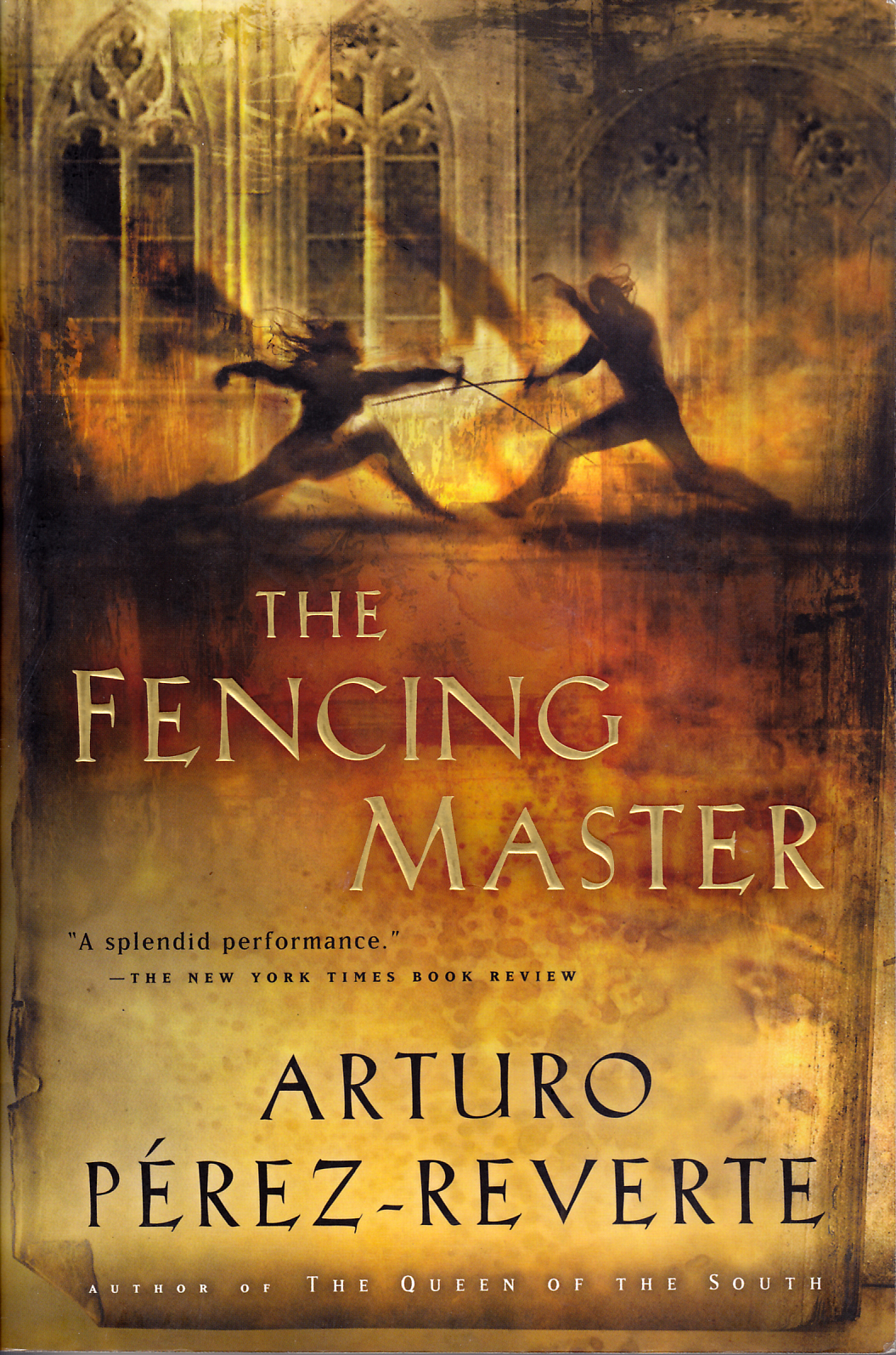 Don Jaime Astarloa is the fencing master of Madrid. He has a
fencing school, and has private clients, including Luis de Ayala, the
Marques de los Alumbres, but Don Jaime is getting old. His world is
disappearing into the past, replaced with pistols.
Don Jaime Astarloa is the fencing master of Madrid. He has a
fencing school, and has private clients, including Luis de Ayala, the
Marques de los Alumbres, but Don Jaime is getting old. His world is
disappearing into the past, replaced with pistols.
The pistol is not a weapon, it is an impertinence. If two men are to kill each other, they should do so face-to-face, not from a distance, like vile highway men. Unlike other weapons, the sword has its own ethics and, if you press me, I would almost say it has its own mysticism too.
And amidst that Spain is in turmoil as the court of Isabella II seethes with intrigue, and revolution is spoken of openly.
But Don Jamie fences, and when a young woman appears, asking him to teach her his special sword thrust, something changes.
This is the story that introduced me to Arturo Pérez-Reverte, and I went on to read many more of his books, though those that have been translated into English probably are fewer than he has written.
There are so many things I like about this story, so many passages I marked for further consideration.
"You're forgetting about God."
"He doesn't interest me. God tolerates the intolerable, he is irresponsible and inconsistent. He is not a gentleman."
And there is fencing.
It's an interesting story, an historical mystery, set in Spain, during a time about which I know nothing. Not that one learns too much about historical Spain–Don Jamie doesn't care about politics. Of course, he's drawn in, whether he likes it or not.
Published by Harcourt
- July 2005 | Rating: 8/10
- August 2013 | Rating: 8.5/10
The Flanders Panel (1990) translated by Margaret Jull Costa
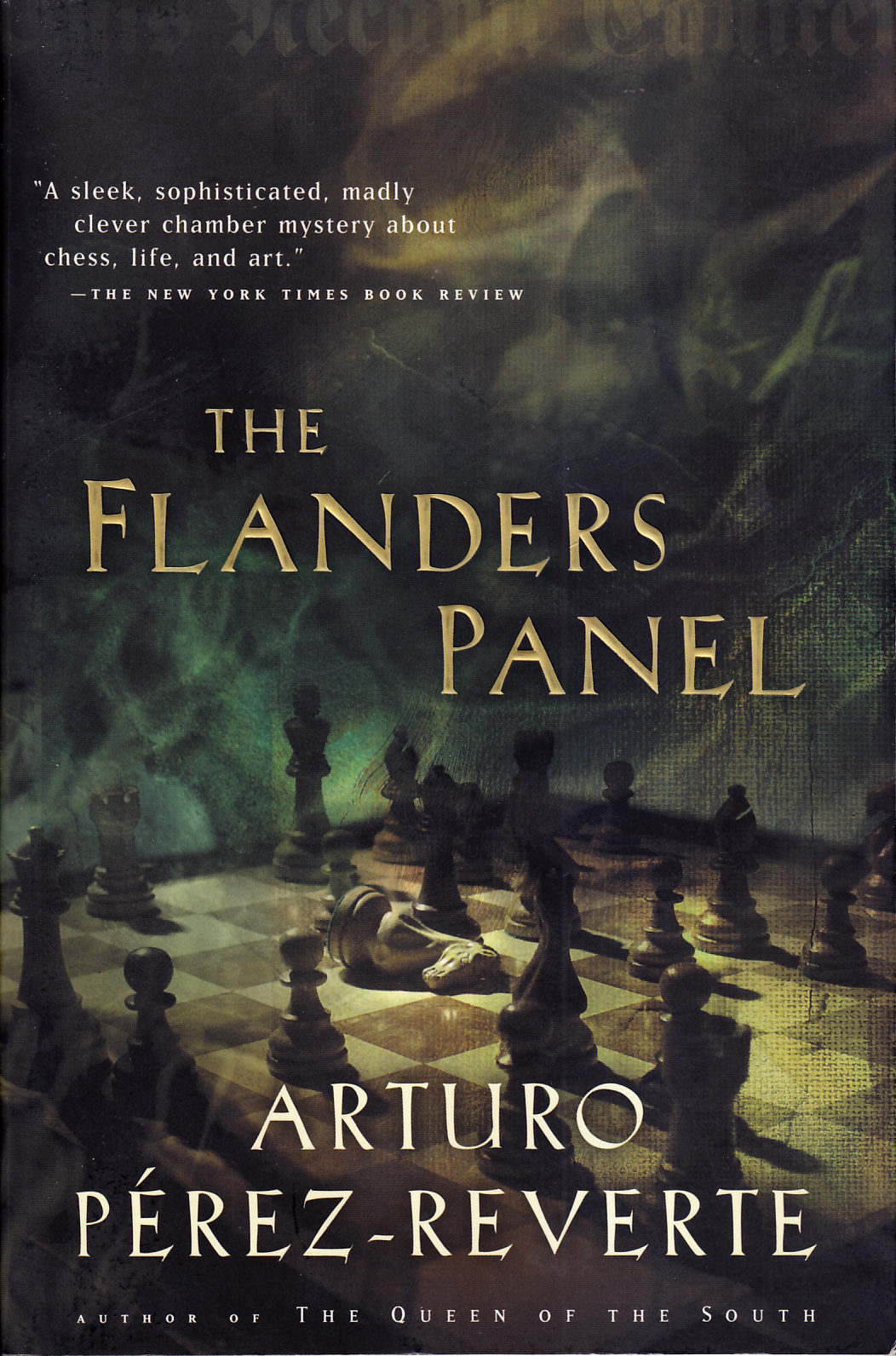 I enjoyed The Fencing Master so much that I picked up The Flanders Panel and two other of Arturo Perez-Reverte's books to read, in the hopes that I would like them just as well.
I enjoyed The Fencing Master so much that I picked up The Flanders Panel and two other of Arturo Perez-Reverte's books to read, in the hopes that I would like them just as well.
While restoring the painting "The Game of Chess" Julia discovers a hidden line of text, "Who killed the knight?" Hoping that this inscription will help increase the resale value of the painting, Julia begins to research the history of the painting and the individuals depicted within. However, this 15th century mystery leads to a modern mystery.
Like The Fencing Master, The Flanders Panel is a relatively small book, only 304 pages, which was one of the reasons I picked it up to read. I wanted something relatively short, that was going to be comfortable to read. It would have been better only if it was mass market paperback size instead of trade paperback size. Also like The Fencing Master, I was soon sucked into the story.
What I found interesting is that while The Fencing Master was set in the 19th century, The Flanders Panel was set in modern day Madrid. I tend to expect writers who do one time period well to stick with that time period, but Arturo Pérez-Reverte did an excellent job in both the present and the past.
One thing that did strike me about this story was how much everyone smoked. Smoking has become almost anathema in the US, and so reading about characters smoking in restaurants and offices was very unusual. Even the mysteries I read tend not to have much smoking in them, so every time Julia or Cesar lit a cigarette it would come as a surprise. So it was a slight shock, which is rather amusing, since I can easily accept the fantastic in more stories, yet am distracted by smoking. Go figure.
As with The Fencing Master, I really liked the characters. Julia was wonderful--I always like to read strong women written by men. And I quite liked Cesar as well, especially the love he had for Julia, and whom I think he still sometimes saw as a little girl. Munoz was interesting, in that at first I thought I would find him irritating, yet he was such a mystery that I kept wanting to read more about him. And all this was despite the fact that I know next to nothing about chess.
And the mystery and the storytelling were wonderful. I was quickly sucked into the story, and wanted to know what happened next.
I highly recommend this book. The characters are engaging, the mystery is excellent, and the storytelling is great.
November 2005 | Rating: 8/10
The Club Dumas (1993) translated by Sonia Soto (1996)
 I started this book, but couldn't shake the nagging feeling of familiarity. Then I realized that I'd seen a movie of this story. The Ninth Gate (starring Johnny Depp) was the movie of Arturo Perez-Reverte's The Club Dumas.
I started this book, but couldn't shake the nagging feeling of familiarity. Then I realized that I'd seen a movie of this story. The Ninth Gate (starring Johnny Depp) was the movie of Arturo Perez-Reverte's The Club Dumas.
So I've put it down for now. The movie was creepy and somewhat scary, and that's not what I'm in the mood for.
August 2005 | DNF
The Nautical Chart (2000) translated by Margaret Sayers Peden
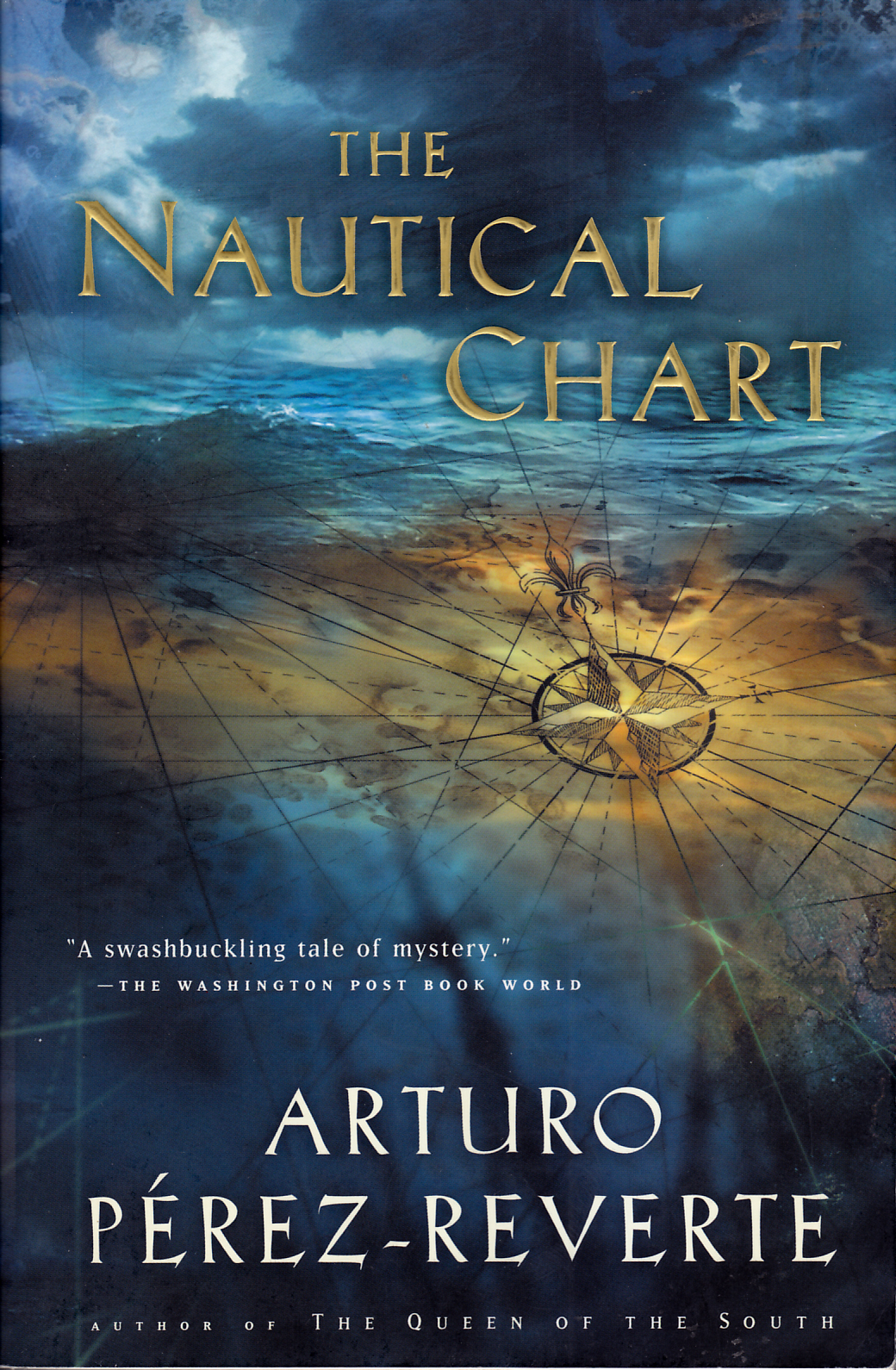 It took me awhile to get into The Nautical Chart. The other books I have read by Arturo Perez-Reverte have drawn me in immediately, but not so for this book. I started reading the book back in December, but kept picking up other books to read instead of going back to read this one.
It took me awhile to get into The Nautical Chart. The other books I have read by Arturo Perez-Reverte have drawn me in immediately, but not so for this book. I started reading the book back in December, but kept picking up other books to read instead of going back to read this one.
Coy is a sailor who has had his license suspended. Thus, he is stranded on land, in Barcelona, without a clue as to what he will do with himself until he can go back to sea. At loose ends, he wanders into an action of naval objects, and a nautical chart, made by Salcedo Urrutia is sold after a nasty bidding war.
From there, Coy is drawn into a strange situation involving the chart, sunken ships, and far more trouble than he expects.
One problem I had with the story was that it started very slowly, and I wasn't sure whether I cared for the main character, Coy, or not. I eventually decided I did like Coy, and I eventually did get into the story, but it took almost 100 pages, which was frustrating.
The second issue I had with the book is that although I did not know precisely where the story was going (in fact, several of my guesses were remarkably wrong) I was pretty sure where the relationship between Coy and Tanger was going (nowhere good).
In tone, the book reminded me more of The Queen of the South than of The Flanders Panel, with a liberal salting of strong language and naughty bits. I suppose the strong language and naughty bits were to be expected, considering that the main character is a sailor, but they just weren't my favorite parts.
However, I much preferred the translation of this book to the translation done of The Queen of the South. Although Spanish words and terms were used, they were either explained, proper names, or the meaning was clear from the context.
Although this was a good book, I just did not like it nearly as well as I liked The Flanders Panel and The Fencing Master. If this was the first Arturo Pérez-Reverte book I read, I am not sure if I would have searched for more of his books to read. The story was interesting, I ended up really liking Coy and El Piloto, and I really wanted to know what happened. But this book just seemed to run much slower than his other books, and I found myself skimming in places.
If you're looking to start reading Arturo Pérez-Reverte, this is not my recommendation for a starting place. I think that The Flanders Panel and The Fencing Master would be a far better place to start.
January 2006 | Rating: 6.5/10
The Queen of the South (2002) translated by Andrew Hurley
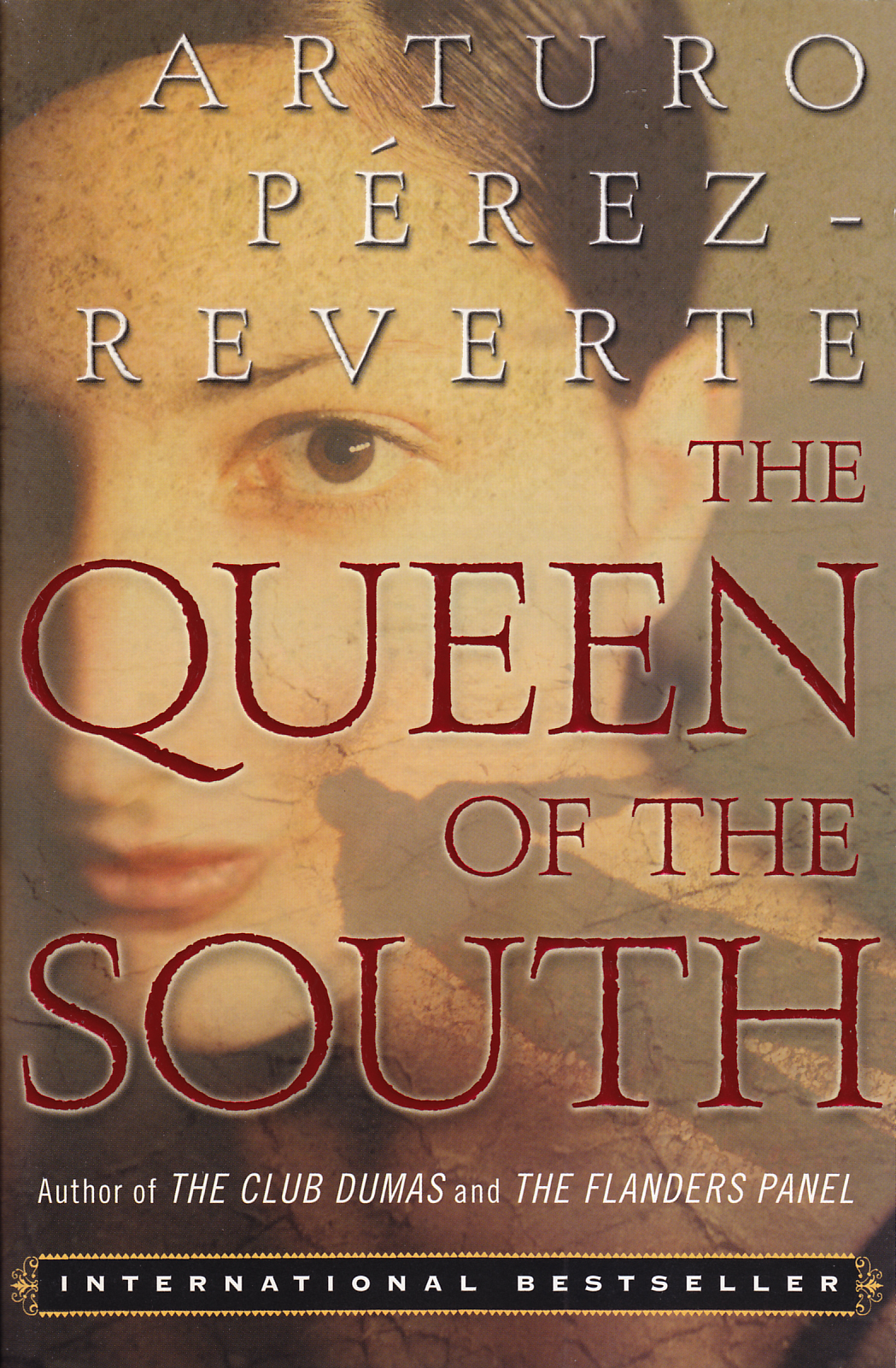 If you'd like to know the power of Arturo Perez-Reverte's writing, pick up this book, read a few pages, then put the book down and try to forget the story.
If you'd like to know the power of Arturo Perez-Reverte's writing, pick up this book, read a few pages, then put the book down and try to forget the story.
A couple of months ago I picked up a book, thought it looked interesting, but decided to get it later, since I already had enough books that day. But the book stuck with me, and I decided that I had to read the story.
So I spent two months trying to find the book that stuck in my head. I flipped through every Arturo Pérez-Reverte book I could find in the mystery section to no luck. I then decided that I must have misremembered the author, and was stuck trying to figure out what book I picked up and then foolishly put down.
Luckily for me, I was wandering through the fiction section and saw The Queen of the South by Arturo Pérez-Reverte (Why this one book was in the new release/best seller fiction section, when all his other books were in the mystery section is beyond me). Picked it up and opened read the first paragraph:
The telephone rang, and she knew she was going to die. She knew it with such certainty that she froze, the razor motionless, her hair stuck to her face by the steam from the hot water that condensed in big drops on the tile walls. R-r-ring--r-r-ring. She stayed very still, holding her breath as though immobility or silence night change the course of what had already happened.
That was it! Finally! I grabbed the book and then wandered around trying to find Michael, afraid that if I put down the book I'd lose it again, and have to spend another two months wondering what happened to the woman in the bath.
So did the book live up to it's first line? For the most part, yes.
The story moves back and forth through time. Part in the present--the research of a journalist writing a story about Teresa Mendoza--and then the Teresa's story as she would have experienced it. The switching back and forth was frustrating at first, because the journalist's segments seemed like an interruption, but eventually I enjoyed them, as they were another angle through which to understand the Teresa Mendoza.
And although on the face of it she seems simple enough, she is not a simple character, and I was more than halfway through the book before I realized with a shock precisely what she had become.
The major flaw, however, is I did not care for the translation of this book in comparison to his other books I have read. There were a lot of words that were untranslated, and although they seemed to be primarily pejorative ones, I didn't understand why they couldn't be translated. The translator had no problems using "fucking" and "bitch" and so forth, so why were these other words untranslated? Is there a word that's worse than "fucking" that can't be translated?
I found this very frustrating, because I felt like I was missing part of the story, since I was missing a portion of the dialogue. Hopefully his other books are translated Margaret Jull Costa, who did an excellent job with The Flanders Panel and The Fencing Master.
The story tells of Teresa Mendoza, who escapes a death sentence after her pilot boyfriend is killed by the local drug lords for double crossing them. It tells of her escape and how she rebuilds her life--though not in a way that the majority of society would necessarily approve of.
The story is at times brutal--this is not a book that I am planning on loaning my grandmother--yet fascinating. There are horrible parts, where evil occurs, yet I couldn't look away, because I had to know what happened.
I also really liked the cover of this printing--the way it seems to reflect what was happening internally to the main character. Very nice.
The Queen of the South is very different from the other Arturo Pérez-Reverte books I have yet, but it is no less good than his other books, and I recommend it wholeheartedly, despite the language, the drugs, the violence, and the frustrating translation.
November 2005 | Rating: 8/10 (points docked for the translation)
The Painter of Battles (2009) translated by Margret Sayers Peden
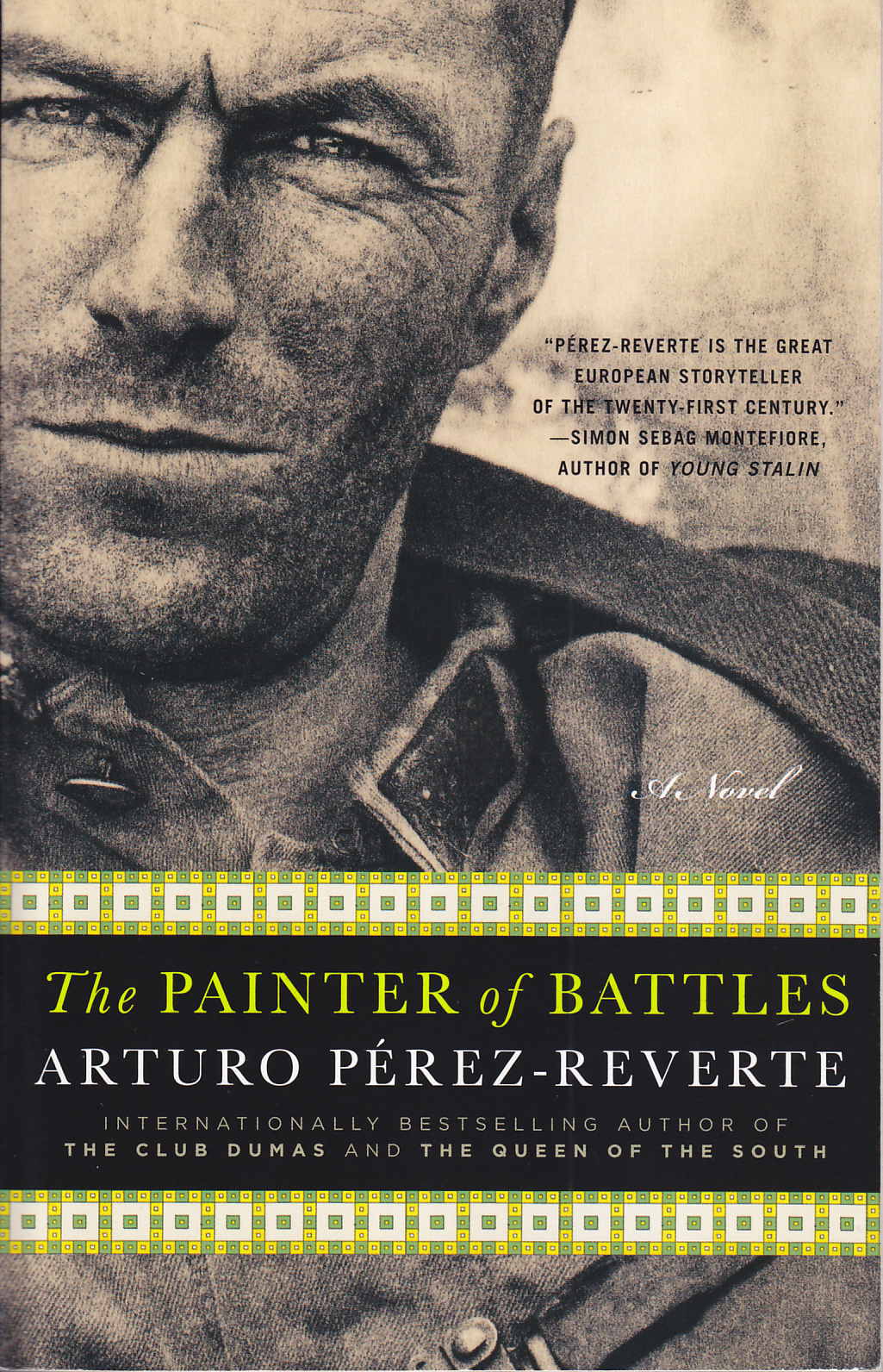 Andres Faluques was a renowned war photographer, but after he retired, he decided to again take up painting, which he'd given up in his youth for photography, because although he was a proficient painter, he wasn't a great painter. But he was a great photographer.
Andres Faluques was a renowned war photographer, but after he retired, he decided to again take up painting, which he'd given up in his youth for photography, because although he was a proficient painter, he wasn't a great painter. But he was a great photographer.
However, now he is creating a mural that distills the things he has seen into a single work of art–a work that is being created in a building that is deteriorating.
His need to create what is essentially a temporary work if art gives us our first glimpse of the complexity of the mind of the painter of battles, and that complexity only increases as we learn more of his past life.
Although I'd read Arturo Perez-Reverte's biography before, it was not until I started reading The Painter of Battles that I became truly cognizant of the fact that before he took up fiction, he was a war journalist.
What is interesting, however, is that for the most part, the horrors that are described are done so in an all but clinical manner, as he describes bloodshed and murder and rape from a distance, with little or no recognition that those are the bodies of humans–of men and women–in his photos and in his painting.
I'm describing it badly, but what I'm trying to make clear is that I initially feared this would be a gruesome book, but the scenes of destruction–although horrifying–are not vivid, as the painter of battles sees everything through the lens of his camera, from a distance.
What I also liked is that he addresses a question I have also wondered.
"At any rate, you kept working. You took the second photo after the man was dead at your feet… Had it occurred to you in the interim that maybe they killed him because you were there? They did it so you would photograph it?"
The painter of battles didn't answer. Of course he'd thought of it. He'd even suspected that's exactly what had happened.
But it is even more than that. How can someone view the horrors of man's inhumanity to man without being changed, without it destroying your soul?
As I said, it's not a gruesome book, even though it is full of horrors. Far more disturbing than the scenes the painter creates and describes, is that humanity creates such destruction, and that someone could see so much destruction and horror.
Although this is not light reading, it is still very very good, like almost everything else I have read by him. And although it does make you think, the heart of the story is the unfolding past of the painter of battles. And it's not quite as depressing as you'd think.
December 2009 | Rating: 8/10
Captain Alatriste
Captain Alatriste (1996) translated by Margaret Sayers Peden
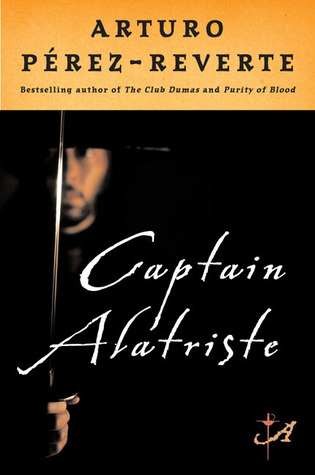 My mistake came in reading this after reading Steven Brust. Following one swashbuckling adventure with another is bound to lead to comparisons, and as there are few whose writing I love more than Steven Brust, anything else is going to come across as weak by comparison.
My mistake came in reading this after reading Steven Brust. Following one swashbuckling adventure with another is bound to lead to comparisons, and as there are few whose writing I love more than Steven Brust, anything else is going to come across as weak by comparison.
Which is not to say that this is a weak book, because it isn't. It is, in fact, an excellent book. It's only failing was in not being another Steven Brust book, for which it can hardly be blamed.
Inigo Balboa's father was killed in battle, and Diego Alatriste y Tenorio--better known as Captain Alatriste-- said he would care for Balboa's young son, perhaps not realizing that Inigo's mother would take him up on the offer. And so Inigo ends up a page of sorts to Captain Alatriste, who is residing in Madrid because the last injury he took is not healing well.
As an ex-soldier, Captain Alatriste does not have a large number of job possibilities, and so he works as he can, when he can, living by the sword.
My earlier comparison to Steven Brust's The Phoenix Guards would not be amiss, nor would a comparison to The Three Musketeers, as Captain Alatriste is a swashbuckling adventure, with plenty of fencing and a large dose of intrigue.
What is interesting is that while I expected this book to be more like The Fencing Master, I would have been hard pressed to recognize this as by the same author. The tone is very different, as is the style. The narrator is Inigo, who is relating the events years after they occurred, although he does relate Captain Aritriste's thoughts and impressions, stating that these things were told to him later.
What remains the same, however, is excellent storytelling, with a tale that immediately draws you in. And the writing was good as well. The following passage particularly struck me:
I, at my tender age, still did not know that it is possible to speak harshly about what we love, precisely because of that love, and with the moral authority that love bestows upon us.
Although I did not enjoy this translation nearly as much as the translations of The Fencing Master and The Flanders Panel, the writing was still good--especially the poems.
One thing I find curious, however, is the use of profanity. I loaned The Fencing Master and The Flanders Panel to my grandmother without hesitation, however, I am not sure about Captain Alatriste. Though I probably will loan her book, with a warning about the language, so she knows what to expect. I suppose, however, that as Captain Alatriste was a career soldier, a certain amount of vulgarity is to be expected. I suppose I simply was not expecting that much profanity in a swashbuckling adventure, and don't know enough about the language spoken at the time to know which would be more valid.
If you like adventure--especially with lots of fencing-then you're going to like Captain Alatriste. And I am looking forward to the next book, Purity of the Blood.
February 2006 | Rating: 7/10
Purity of the Blood (1997) translated by Margaret Sayers Peden
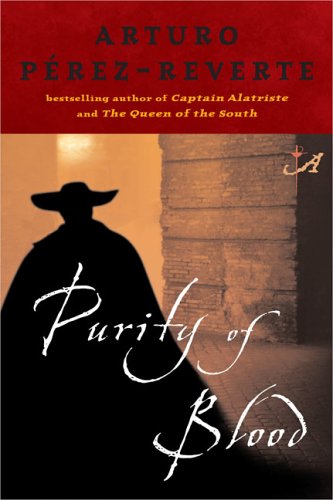 Purity of the Blood is the second Captain Alatriste book. Inigo continues the story of Captain Alatriste, who remains in Madrid, still talking of returning to war, but still looking after Inigo, and still taking commissions to make ends meet. This time he is asked by a father to help rescue a daughter trapped in a nunnery, where the priest takes advantage of the innocence of the girls within.
Purity of the Blood is the second Captain Alatriste book. Inigo continues the story of Captain Alatriste, who remains in Madrid, still talking of returning to war, but still looking after Inigo, and still taking commissions to make ends meet. This time he is asked by a father to help rescue a daughter trapped in a nunnery, where the priest takes advantage of the innocence of the girls within.
After the previous books I have read by Arturo Perez-Reverte. I found this one somewhat disappointing. The story didn't seem to flow as well as previous stories, and much of the book seemed to be a history of the Spanish Inquisition as the tale of Inigo and Captain Alatriste. Don't get me wrong, I enjoy history, but I was already familiar with many of the details we learn in the story--perhaps I was waiting to read something I didn't already know, and since everything I read was familiar, it made the history lesson less interesting.
However, for those who are not familiar with the Spanish Inquisition, this book may present an interesting history lesson. It discusses in detail how the Conversos--Jews who had been forced to convert to Christianity upon threat of death--were treated in Catholic Spain. And how no matter how pious these Conversos were, they were never quite good enough--the lacked the purity of the blood, with their Jewish heritage and roots.
It also shows the power that the Catholic church had in Spain during this time--the power that the Catholic Church gained through the Inquisition.
Beside this history lesson, the story of how Inigo and Captain Alatriste attempt to rescue a young woman--a Converso who has entered a nunnery--seems quite brief. It's as if he wrote a story around a history lesson about the Inquisition. Without the history lesson, the story would have been far shorter.
There was, however, some swashbuckling adventure, and I still enjoy the realism of the sword fights. It's the little things he describes that I never considered before, such as how the swordsmen wrap their cloaks around their arms for protection, that makes the fight scenes so interesting. It makes you wonder what a real duel from that time would have looked like, and whether it bears any relation to anything we've ever seen in the movies or on TV.
If you read Captain Alatriste, then you'll certainly want to read Purity of the Blood, however, if you have never before read any books by Arturo Perez-Reverte, I might suggest starting at another book, such as The Fencing Master (my personal favorite) or The Flanders Panel.
January 2007 | Rating: 6/10
